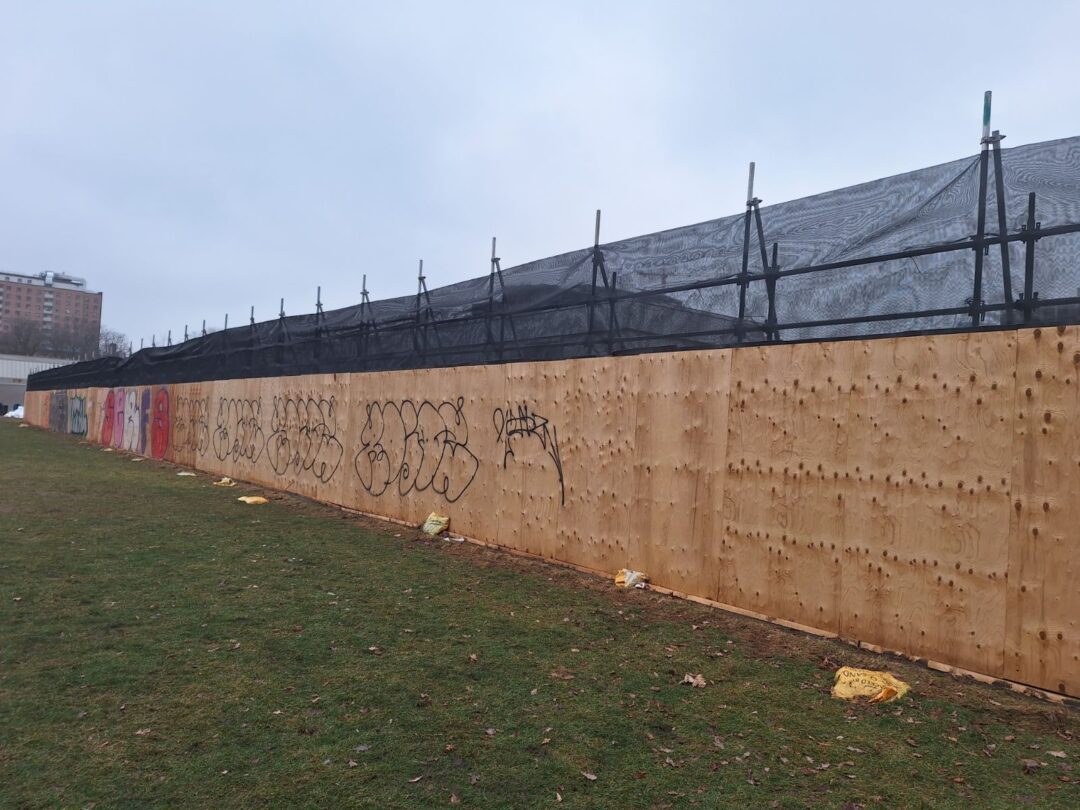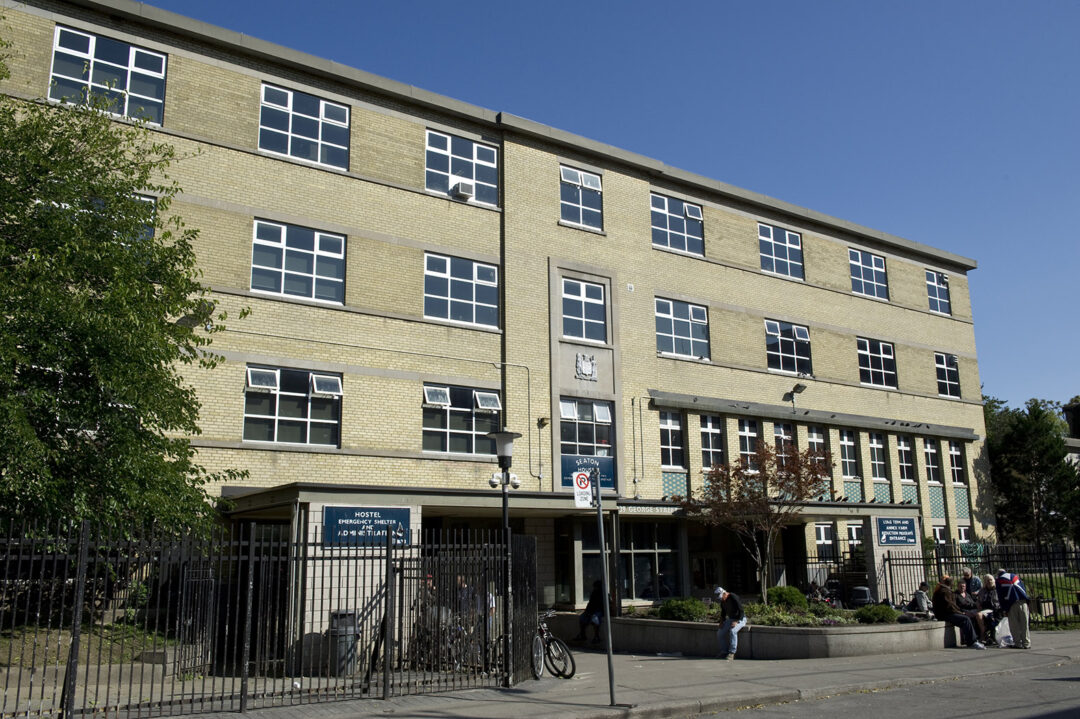By Dennis Hanagan –
Within three years, Toronto expects to open two new parks featuring shade trees, seating and plants in the tightly-packed Moss Park and St. Lawrence Neighbourhood.
Residents of the Downtown East commented on the city’s draft plans in a six-week online survey last December and January. Most were generally pleased with the draft, which included Black and Indigenous features to reflect the cultures of some residents.
“There is a great need for green space not only in Moss Park, but across the Downtown East,” said Macy Parakh, communications advisor for Ward 13 (Toronto Centre) Councillor Chris Moise.
The park on Richmond Street East midway between Ontario and Sherbourne Streets will be 1400 square metres, about the size of a hockey rink. The one on King Street East, in the St. Lawrence Neighbourhood, between Ontario and Princess Streets will be 470 square metres, a third that size.

Rendering of the preferred design looking southeast towards Richmond Street from the centre of the park. Photo: City of Toronto
The Richmond park will have an Indigenous focus, with tiered stone seating engraved with the Seven Grandfather Teachings, including wisdom and respect, and 13 moons seating reflecting the Indigenous concept of the lunar year.
The King Street park will highlight the Black community with sculptures of cowrie shells that were once used as money on Africa’s west coast, and winding pathways reminiscent of the Sankofa symbol, which teaches ‘learning from the past to build the future.’ It will also have a small half-moon-shaped water feature.
“It’s wonderful to see Black and Indigenous residents and artists engaged in the design for these parks,” said Parakh. The Sankofa symbol “is a meaningful way to usher in a new era in which Black and Indigenous people have a voice in the creation of new public spaces.”
Both parks will have tall lamp posts, seating, shade trees, mounded plant beds, a drinking fountain and a centre for gatherings. Space limitations mean there will be no sport features, off-leash dog areas or washrooms. There will be no grass because planners say it wouldn’t survive heavy foot traffic.
In the city’s survey, 53 percent of respondents identified as White, seven percent as Black and three percent as First Nations. Just over half were women and almost 60 percent said they were homeowners, while a third said they were renters.
Community suggestions included a dog relief area, grass to sit on for picnics, a splash pad, acknowledgment of the local Irish history and a tribute to Toronto’s Black leaders.
Some respondents were concerned the new open space would become a tent city, frequented by drug users. One respondent said: “Instead of spending money on new parks why not clean up Sherbourne and Shuter or Allan Gardens first?”
Parakh said the parks are unlikely to attract encampments. “These new parks are, by design, quite different. The use of more hard surfaces makes them less conducive to encampment activity.”
If tents do pop up, she said Moise’s office will work with city staff “to ensure the proper procedures are followed and any individuals are moved indoors.”
Parakh said responses to the online survey indicate residents want outdoor space to enjoy alone “but also as a place to gather and be in community with others.” Planners say the public feedback will guide final plans for the parks.
The Richmond park is expected to open in 2026 and the King park in 2027.




